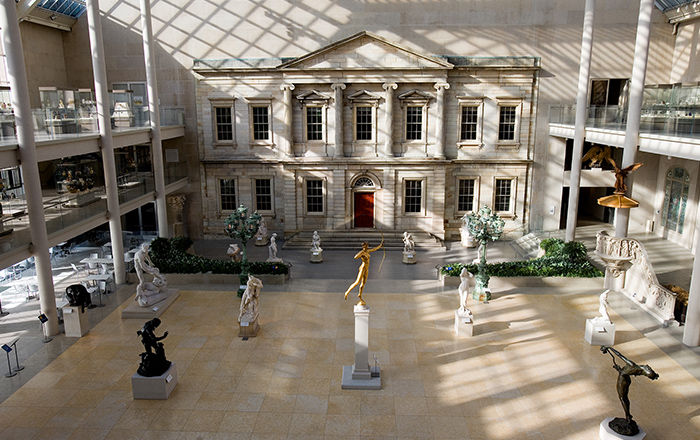“Miranda”—Portrait of Agnes Doggett
Lilian Westcott Hale American
Not on view
Westcott Hale is associated with the so-called Boston School of American Impressionists. Her subjects are typical of that group—upper-class domestic settings populated by women and children, in her case, generally posed individually. “Miranda”—Portrait of Agnes Doggett is among the artist’s most impressive vaporous charcoals on paper, the work for which she is celebrated. It depicts her favorite model from between 1914 and 1916, Agnes Doggett (18997-1969), the daughter of a Dedham neighbor who posed for twenty-five cents an hour to put toward her college education in English. Westcott Hale’s daughter, Nancy, once wrote that her mother found Agnes Doggett “enormously paintable.”
The characterization of the sitter in this work exemplifies the artist’s approach to capturing an interior life and the exquisite rendering of her features and dress in enveloping, suffused light and sensuous texture. Doggett’s physical presence—anchoring the composition and visual force for the viewer—evokes the influential example of the English Pre-Raphaelites, especially the so-called “stunners” depicted in various media by Dante Gabriel Rossetti (1828-1882). The full title of the work suggests how Westcott Hale, like her Pre-Raphaelite forebearers, would often imagine her sitters in character—“Miranda” may refer to the ever-popular heroine of Shakespeare’s The Tempest.
The drawing also reveals Westcott Hale’s highly controlled and distinctive technique employed to create the effect of silverpoint in her drawings. Instead of choosing a silver stylus to mark the paper surface, she used sandpaper to sharpen her charcoal sticks to very fine points—achieving similar qualities of precision and subtle shading. Applying the charcoal in short vertical strokes across the paper, the artist created almost abstract passages of grey and white patterning to define form and convey the overall hushed atmospheric quality of the work. Hale’s fellow Boston School artist William Paxton compared her approach to ‘drawing with a butterfly’s wings’.
